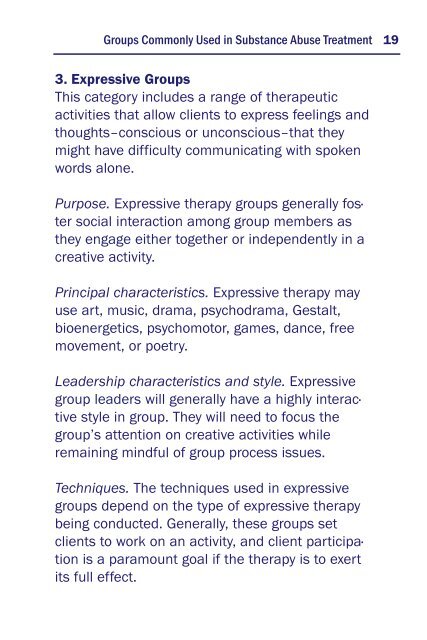Quick Guide for Clinicians - SAMHSA Store - Substance Abuse and ...
Quick Guide for Clinicians - SAMHSA Store - Substance Abuse and ...
Quick Guide for Clinicians - SAMHSA Store - Substance Abuse and ...
Create successful ePaper yourself
Turn your PDF publications into a flip-book with our unique Google optimized e-Paper software.
Groups Commonly Used in <strong>Substance</strong> <strong>Abuse</strong> Treatment 193. Expressive GroupsThis category includes a range of therapeuticactivities that allow clients to express feelings <strong>and</strong>thoughts–conscious or unconscious–that theymight have difficulty communicating with spokenwords alone.Purpose. Expressive therapy groups generally fostersocial interaction among group members asthey engage either together or independently in acreative activity.Principal characteristics. Expressive therapy mayuse art, music, drama, psychodrama, Gestalt,bioenergetics, psychomotor, games, dance, freemovement, or poetry.Leadership characteristics <strong>and</strong> style. Expressivegroup leaders will generally have a highly interactivestyle in group. They will need to focus thegroup’s attention on creative activities whileremaining mindful of group process issues.Techniques. The techniques used in expressivegroups depend on the type of expressive therapybeing conducted. Generally, these groups setclients to work on an activity, <strong>and</strong> client participationis a paramount goal if the therapy is to exertits full effect.
















